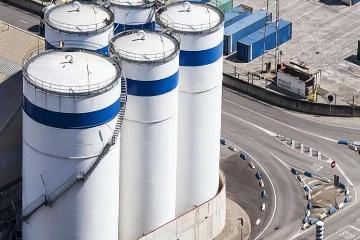Europe's Gas Price Ceiling Intensifies Divisions
Advertisements
In a landmark development, Europe has finally reached an agreement to implement a price cap on natural gas, a move that comes after months of deliberation among its member statesThis strategy is part of a broader effort by the European Union (EU) to mitigate the ongoing energy crisis that has greatly affected the continent this year.
The critical decision was formalized during an EU Energy Ministers meeting held in Brussels on December 19. Under this agreement, the price limit mechanism will only be activated under certain conditions: specifically, if the monthly futures prices at the European Title Transfer Facility (TTF) exceed €180 per megawatt-hour for three consecutive days, and if, during the same period, LNG prices on the international market surpass €35 per megawatt-hour
Advertisements
The cap mechanism is expected to take effect on February 15, 2023.
The TTF prices, alongside the benchmarks from East Asia, namely Japan-Korea Marker (JKM), and the Henry Hub in the United States, constitute major regional gas price indices globallyThe announcement of the price cap has already resulted in a drop in the TTF gas futures prices, clear evidence of the market's immediate reaction to the new policyYet, the discussions surrounding this cap were heavily laden with various interpretations and concerns.
One primary contention among the nations revolved around whether this cap would genuinely shield European households and businesses from extreme price spikes caused by rapid temperature dropsNations expressed differing viewpoints on the triggers for the price limit and the valuation that should be imposed
Advertisements
Reports indicate that Germany was apprehensive that the cap could hinder Europe’s ability to attract sufficient gas supplies, although it eventually supported the initiative following consensus on accelerating renewable energy permitsConversely, Hungary opposed the proposal outright, while the Netherlands and Austria abstained from the vote due to concerns that the cap might disrupt the market and jeopardize supply securityNevertheless, a coalition of over fifteen countries, including Belgium, Poland, and Switzerland, rallied in favor of a lower triggering threshold of €200, ultimately settling on the €180 per megawatt-hour cap.
The imposition of a cap on gas prices is aimed at preventing extreme volatility that could arise from increased demand during the harsh winter monthsOver the last ten years, European gas prices have fluctuated between €5 and €35 per megawatt-hour
Advertisements
However, they saw a staggering rise in 2022, with wholesale prices briefly surging above €300 per megawatt-hour during the summer months, particularly after gas supplies through the key pipeline Nord Stream 1 from Russia to Western Europe were cut off.
As temperatures across Europe are expected to dip below seasonal averages in December, compounded by the absence of Russian gas supplies, market participants are increasingly concerned about a potential resurgence in gas prices.
In response to the ongoing upward trajectory of energy prices, the EU has continuously sought ways to alleviate the financial burden placed on both businesses and citizensOn December 5, parallel to the gas price cap discussions, the Group of Seven, in conjunction with the EU and Australia, implemented a price limit of $60 per barrel on Russian crude oil exports through maritime routes.
Concerns of Ineffectiveness
The original intention behind the EU's price cap was to mitigate energy costs and tackle the crisis of rising energy prices
- Slowdown in Indian Manufacturing Hinders Growth
- BYD Shares Rise While Tesla Stock Dips
- Definition and Types of International Capital Flows
- Gold Surpasses $2,700 Threshold
- Latin America Faces Urgent Call for Structural Reforms
However, despite the implementation, certain analysts have begun to speculate that the measure might not significantly lower energy bills for individuals or enterprisesIn fact, it may end up being counterproductive.
Simona Tagliapietra, a senior researcher at the Bruegel think tank, indicated that the cap's dual restriction - which hinges on a notably high price of €180 per megawatt-hour - is likely to occur only under very specific circumstances, leaving the ultimate impact fraught with uncertainty.
Jacob Mandel, a senior analyst at Aurora Energy Research, suggested that the recent measures may not create any savings for consumers; instead, they could lead to increased prices in certain instancesTraders may find ways to continue trading gas above the cap, potentially inflating prices.
One notable strategy could see traders opting to switch contracts

The EU price cap applies to near-month, three-month, and near-year contracts within the TTFHowever, traders might favor day-ahead or previous day contracts, circumventing the restrictions set by the EU.
Additionally, traders have the option to move their gas transactions off the energy exchanges towards private trades, which currently exist beyond the EU limitsAccording to SEB Markets, most transactions of liquefied natural gas (LNG) by large European consumers are carried out through over-the-counter trading, suggesting that these transactions will not be impacted by the EU's cap.
A third method to escape the EU cap is for traders to move to other natural gas marketsWhile the cap applies within the EU, it does not extend to external markets, such as the UK’s NBP trading center.
Furthermore, analysts have expressed skepticism regarding the repeat of last summer's record high gas prices of over €340 per megawatt-hour, especially given the rapid expansion of Europe’s LNG import infrastructure following the Russian gas supply reductions.
Germany, Europe’s largest gas consumer, has already initiated operations at its first floating LNG terminal and plans to open more facilities next year, while countries like the Netherlands and Poland are also bolstering their LNG infrastructure capabilities.
As Sindre Knutsson, head of energy markets at Rystad Energy, pointed out, the likelihood of observing extraordinarily high price premiums in the TTF market remains low
Leave a comment
Your email address will not be published